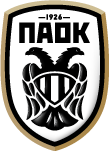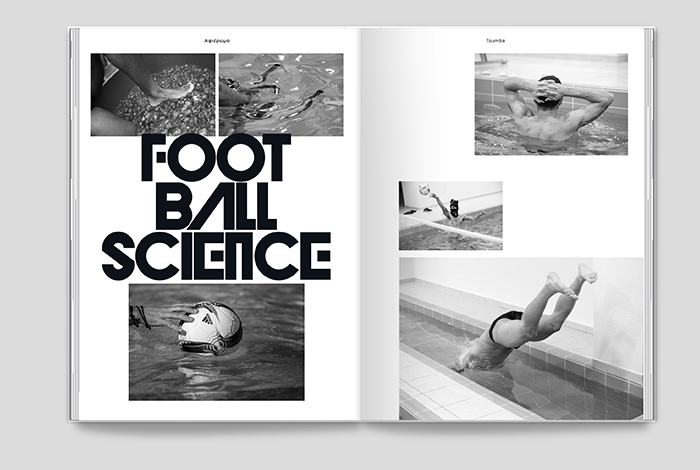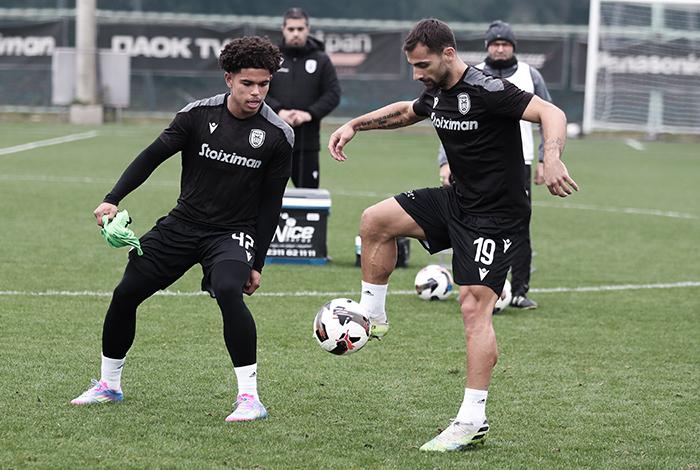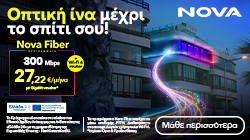Football Science
PAOK players suffered many muscular injuries during the previous season. There was constant talk about the causes of this phenomenon, but clear answers were scarce. There are no magic recipes in football, however the “Double-Headed Eagle” managed to tackle the problem effectively and had almost all their players ready for action throughout 2016-17, at a staggering 99% percentage that earns them a high place by European standards.
Life in football is short. One year ago, the main concern was: “What about all those injuries at PAOK?” Several people, experts or not, spoke in pompous fashion about the phenomenon.
In such, truly important issues though, it’s preferable to act rather than speak. And PAOK acted in a decisive manner to handle a huge problem once and for all. The outcome of their actions is more than encouraging. There are no magic tricks in football science, however the “Double-Headed Eagle” have managed to cut down considerably on the number of muscular injuries.
In 2016-17, players’ availability for trainings reached 99%. The 1% preventing them of a perfect result reflects the injuries of Djalma Campos, Facundo Pereyra, Dimitris Pelkas and Fernando Varela. The injuries of Panagiotis Glykos and Giannis Mystakidis don’t fall under the “muscular damage” category.
The importance of high availability percentage is obvious in a series of research studies conducted by UEFA. It has been proven that teams with availability of 90% or more are most likely to win titles at the end of the season. Teams with lower percentages see their chances for silverware considerably reduced.
However, it’s not about winning the league, but to create the necessary environment in order to vie for titles under the best possible circumstances. Organized physiotherapy, recovery, injury prevention and rehabilitation are very important factors on a team’s path to success.
The change was instigated last summer, when PAOK decided to upgrade their medical organization and services. They changed their medical team, hired new specialized professionals and bought more equipment. Nea Mesimvria isn’t just the place where trainings are held. Nowadays, PAOK FC Sports Centre meets the highest standards of contemporary football and features everything that professional players need to work on their physical condition.
THE BASIS OF CHANGE
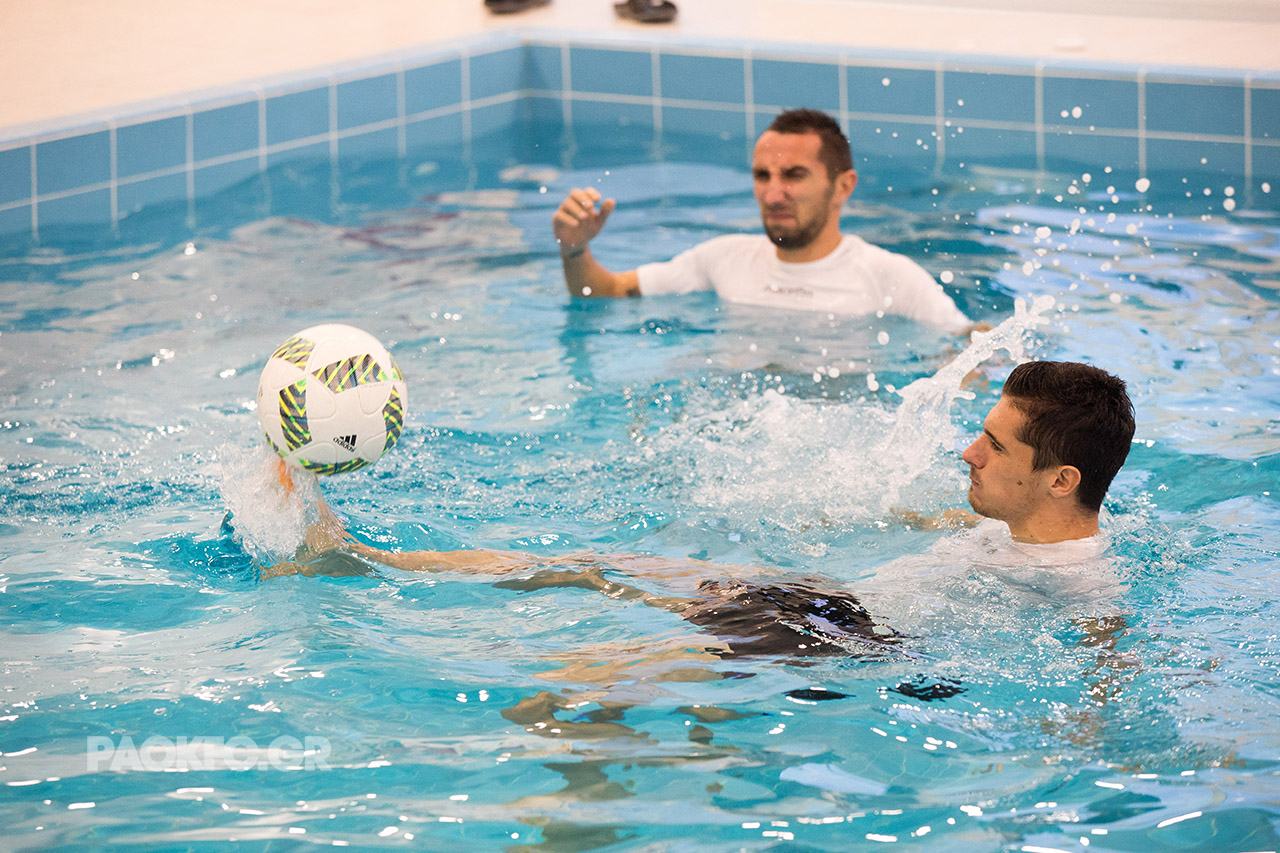
No change is possible from one day to the next. In order to expect results, a thorough organization, planning and preparation are in order.
PAOK started their effort last summer, even before the squad returned from vacation for their first preseason training. The first stage was to compile detailed charts of each player’s physical traits and special features on a sporting, anatomic and functional level through FMS tests. These tests were held by then rehabilitation coach Petar Milkanović, while ergophysiologist Giorgos Ziogas submitted the players to ergometrics tests and the head of medical services Manolis Papakostas checked their overall medical condition.
Based on the results of all afore-mentioned tests, PAOK staff created personalized programs adjusted to the needs of each player. Before and after training sessions, the players would remain for some extra work, in order to cover their own organic needs and be at the best possible form at all times.
The tests also served as guidelines for the coaching staff to adjust the intensity of trainings to match conditions. Fitness coaches Dimitris Daniilidis (at first) and Petar Milkanović (since January) saw to it that the players would be subjected to the same amount of charge that they would face in the 90 minutes of their upcoming match. That enabled them to be readier for action and reduced their injury risk.
The staff of PAOK also focused on the healing of minor injuries. The continuous presence of the medical staff in trainings secures that the player receives immediate treatment before a casual pain escalates to serious injury. The medical staff, in cooperation with the coaches, adjusts the training intensity accordingly for players nursing injuries.
UNDER CONTROL
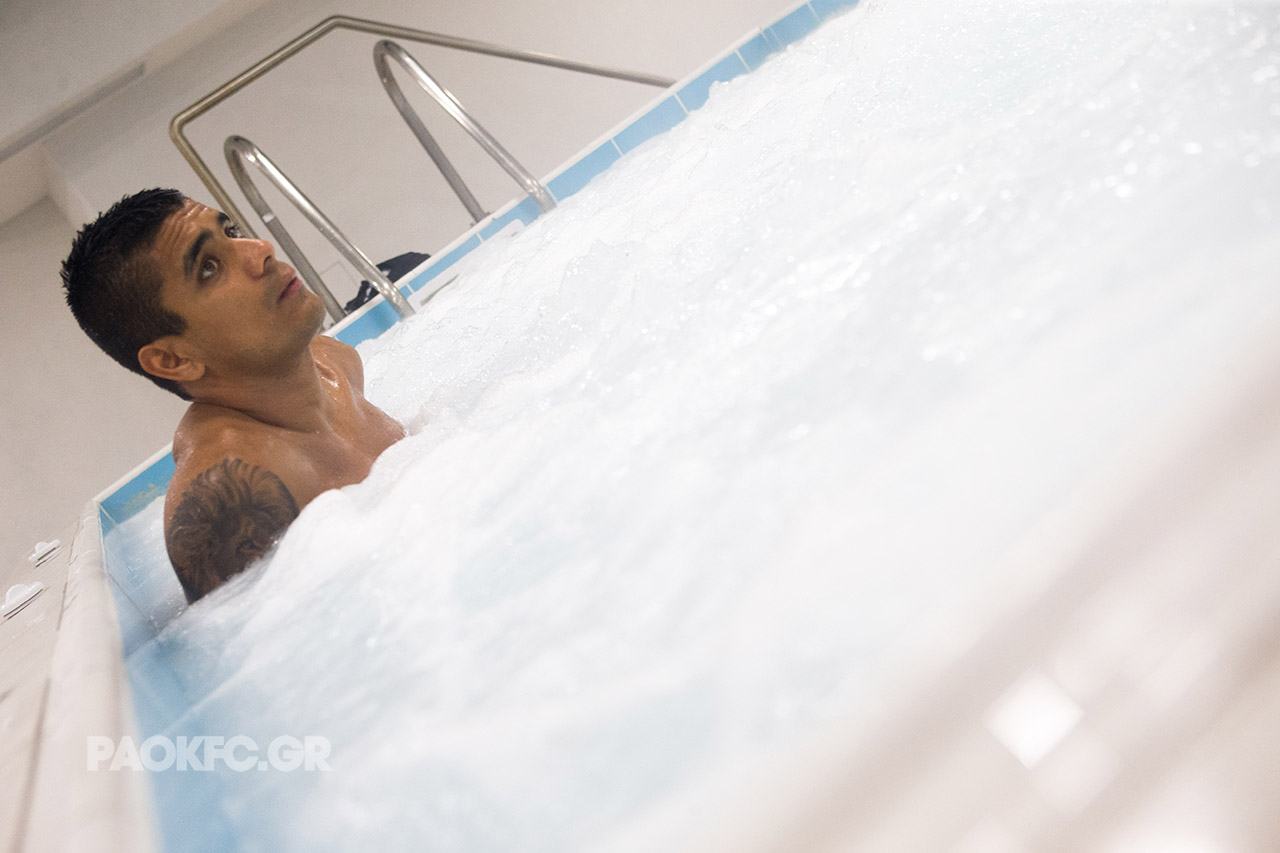
Dealing with problems immediately, thanks to the harmonious and trusting relationship between coaching staff, medical team and players is also of vital importance. Here is the example of West Ham United, whose staff set out to deal with many injuries and slow rehabilitation.
In their quest to remedy the problem, the club collaborated with the university of London to conduct a research and pinpoint the root of the problem. It was concluded that the policy of West Ham United to allow players visit their own physician and follow a rehabilitation program without central guidelines from the club was the main reason behind the slow recovery process. Therefore, they reorganized their medical staff, took exclusive control of rehab procedures and managed to cut down on the number of injuries and lengthy recoveries.
Browse exclusive photography on PAOK FC Official App: Play Store / App Store
ACTIVE REHABILITATION
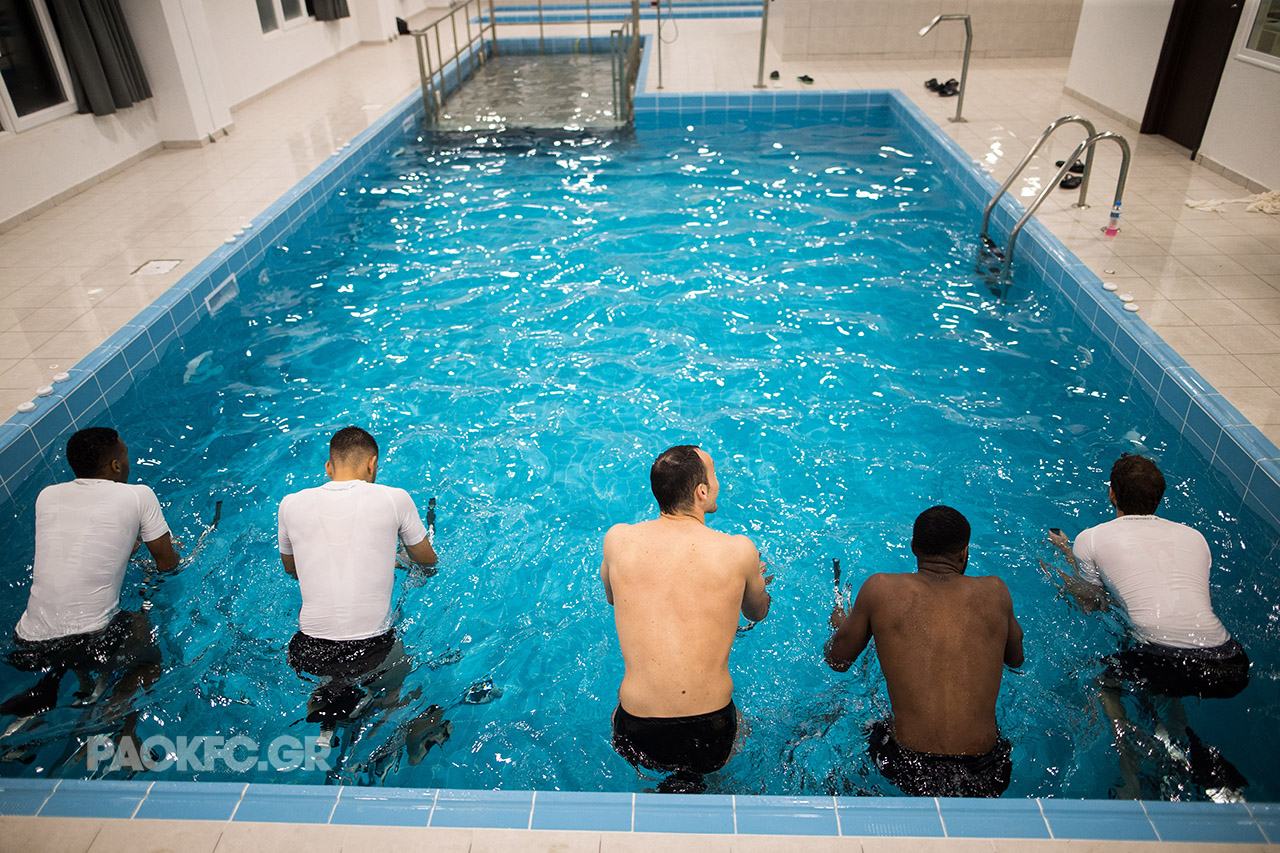
Proper training is fundamental in football, but proper recovery and recuperation on a daily basis are just as important. Right after the final whistle of PAOK games, the staff of the club would kick off work on the players’ energetic recovery –a task overseen by head physiotherapist Nenad Kovačević.
PAOK staff planned a special protocol of energetic recovery for the players that would last almost an hour and consisted of stationary bike, hot and cold water immersion and movement of joints. This procedure would partly heal the body from the 90-minute effort. The main recuperation procedure would be held on the following day, most of it in the water.
The players did 10-15 minutes on the bike in the pool and then went through a special program of movement for the muscles who underperform during an encounter. That ensures body balance and reduces injury risk.
The players would then go through neuro-reflexology corridors, alternating cold and hot water and the program would conclude with massage and physiotherapy in the brand new physiotherapy room. “The recovery process in the pool helps players decompress mentally as well –that is very important, because they feel more loose and work better than they would if they had gone through a similar session in the gym”, Kovačević explained.
Nothing is left to chance. PAOK physiotherapists and doctors controlled the players’ fatigue and stress level on a daily basis, because such factors can affect match performance. For example, if a player hadn’t slept well at night due to a problem, he would communicate that to the staff on the following day and he would go through an adjusted program of reduced intensity.
INSTALLATIONS & EQUIPMENT

Most of the above wouldn’t be possible, if PAOK FC hadn’t decided to invest on infrastructure last summer. By renovating their training centre, they are able to provide the best possible services to their players.
After the extensive renovation work that started in July and was completed in November, Nea Mesimvria boasts:
- Swimming pool with movable floor
- Neuro-Reflexology corridors
- Jacuzzi
- Sauna
- Hammam
- New, bigger medical room
- New, bigger physiotherapy room
- New, bigger gym
The special movable floor on the pool was added for players who are dealing with a serious injury and their movement is impaired. In such cases, the floor adjusts to the required height, so that the recuperation process can be held safely.
Meanwhile, the medical staff of PAOK are equipped with a portable ultrasound unit and state-of-the-art methods for diagnosis, recovery and rehabilitation. Until recently, the “Double-Headed Eagle” would offer their players just four recovery methods. Nowadays, with the addition of the cryotherapy chamber, that number has gone up to eight. No other club in Greece can boast such a total.
One of the new therapies introduced by PAOK is the use of a special chamber of hyperbaric oxygen that helps the body heal from fatigue and regain its previous status in record time. Top clubs around the world have turned to this method, in order to decompress their players from back-to-back games.
Apart from introducing new equipment in Nea Mesimvria, PAOK also invest on the continuous training of their staff. The staff of the “Double-Headed Eagle” participate in seminars and congresses in Greece and abroad. The club are also collaborating with Isokinetic Group of Bologna and Aspetar Qatar and the staff of PAOK will visit the two establishments to improve their know-how.
The installations underwent also special preparation for the… notorious winter of Nea Mesimvria. A new winter turf that can endure the most extreme weather conditions was laid on one of the pitches –it is also considered safer for the players. The club are also planning to construct a sand pitch, aimed for the rehabilitation process of the injured.
RESULTS
The combination of proper, personalized training, energetic recovery and recuperation and central medical policy has helped PAOK to keep almost all their players healthy and available at any moment.
As stated before, the availability percentage of the “Double-Headed Eagle” reached a staggering 99% that places PAOK in the podium of the Benchmark Injury Management Assessment network (with the participation of renowned clubs like Aston Villa FC, Middlesbrough FC, Hull City AFC, FC Zürich, Grasshopper Club Zürich, Wolverhampton Wanderers FC, Kaizer Chiefs FC…)
GLOSSARY

Cryotherapy
The player enters a special chamber set at –70οC, wearng protective mittens and socks for their hands and toes. Freezing temperatures trigger a shock called vasoconstriction, meaning that blood vessels narrow and inflammation and swelling naturally reduce. The blood flows more freely, enhances the muscles and the players feel rejuvenated at a record time.
Meanwhile, cryotherapy enriches the immune system, increases energy levels, reduces muscular pain and inflammation, deals with exhausted or damaged tissue, improves the operation of the joints and does wonders for the whole body.
Hyperbaric chamber
Players enter a special decompression chamber, where atmospheric pressure is increased (up to 1,4 bar), higher than the normal air pressure (1 bar at sea level). They breathe 100% oxygen via a special mask covering nose and mouth.
Increased pressure also increases the oxygen flow in the blood, almost ten-fold. This process helps to deal with injuries and fights fatigue.
Game Ready
A system of fast recovery, mostly used for the footballers’ legs. It’s an active-compression machine that stimulates muscles and helps enhance speed, power and elasticity.
